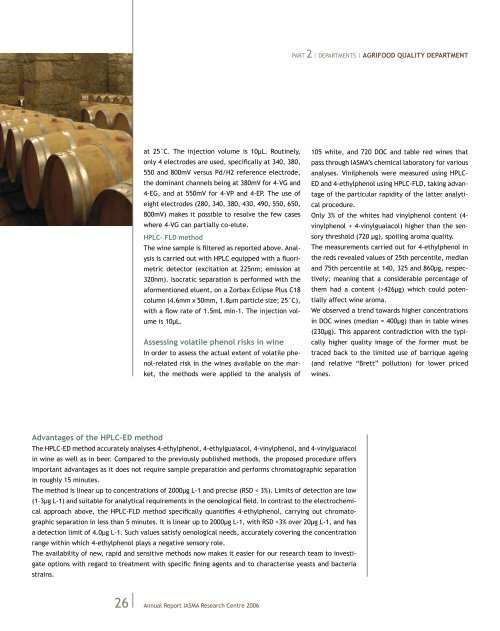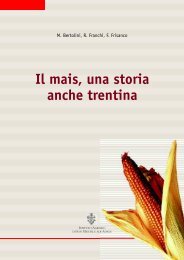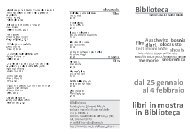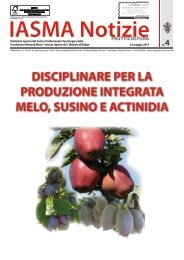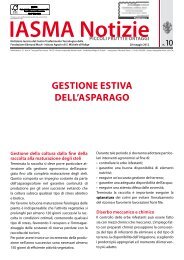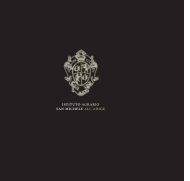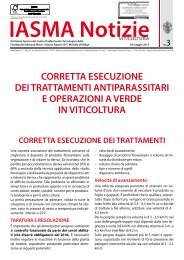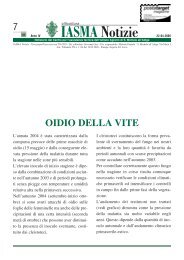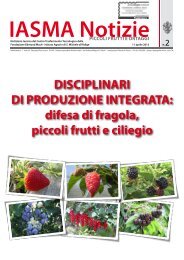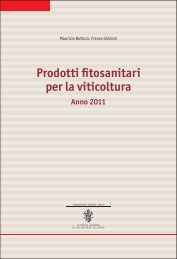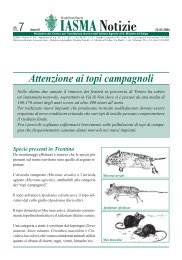Istituto Agrario di San Michele all'Adige (IASMA - Fondazione ...
Istituto Agrario di San Michele all'Adige (IASMA - Fondazione ...
Istituto Agrario di San Michele all'Adige (IASMA - Fondazione ...
Create successful ePaper yourself
Turn your PDF publications into a flip-book with our unique Google optimized e-Paper software.
at 25°C. The injection volume is 10μL. Routinely,<br />
only 4 electrodes are used, specifi cally at 340, 380,<br />
550 and 800mV versus Pd/H2 reference electrode,<br />
the dominant channels being at 380mV for 4-VG and<br />
4-EG, and at 550mV for 4-VP and 4-EP. The use of<br />
eight electrodes (280, 340, 380, 430, 490, 550, 650,<br />
800mV) makes it possible to resolve the few cases<br />
where 4-VG can partially co-elute.<br />
HPLC- FLD method<br />
The wine sample is fi ltered as reported above. Analysis<br />
is carried out with HPLC equipped with a fl uorimetric<br />
detector (excitation at 225nm; emission at<br />
320nm). Isocratic separation is performed with the<br />
aformentioned eluent, on a Zorbax Eclipse Plus C18<br />
column (4.6mm x 50mm, 1.8μm particle size; 25°C),<br />
with a fl ow rate of 1.5mL min-1. The injection volume<br />
is 10μL.<br />
Assessing volatile phenol risks in wine<br />
In order to assess the actual extent of volatile phenol-related<br />
risk in the wines available on the market,<br />
the methods were applied to the analysis of<br />
Advantages of the HPLC-ED method<br />
The HPLC-ED method accurately analyses 4-ethylphenol, 4-ethylguaiacol, 4-vinylphenol, and 4-vinylguaiacol<br />
in wine as well as in beer. Compared to the previously published methods, the proposed procedure offers<br />
important advantages as it does not require sample preparation and performs chromatographic separation<br />
in roughly 15 minutes.<br />
The method is linear up to concentrations of 2000μg L-1 and precise (RSD < 3%). Limits of detection are low<br />
(1–3μg L-1) and suitable for analytical requirements in the oenological fi eld. In contrast to the electrochemical<br />
approach above, the HPLC-FLD method specifi cally quantifi es 4-ethylphenol, carrying out chromatographic<br />
separation in less than 5 minutes. It is linear up to 2000μg L-1, with RSD 426μg) which could potentially<br />
affect wine aroma.<br />
We observed a trend towards higher concentrations<br />
in DOC wines (me<strong>di</strong>an = 400μg) than in table wines<br />
(230μg). This apparent contra<strong>di</strong>ction with the typically<br />
higher quality image of the former must be<br />
traced back to the limited use of barrique ageing<br />
(and relative “Brett” pollution) for lower priced<br />
wines.


